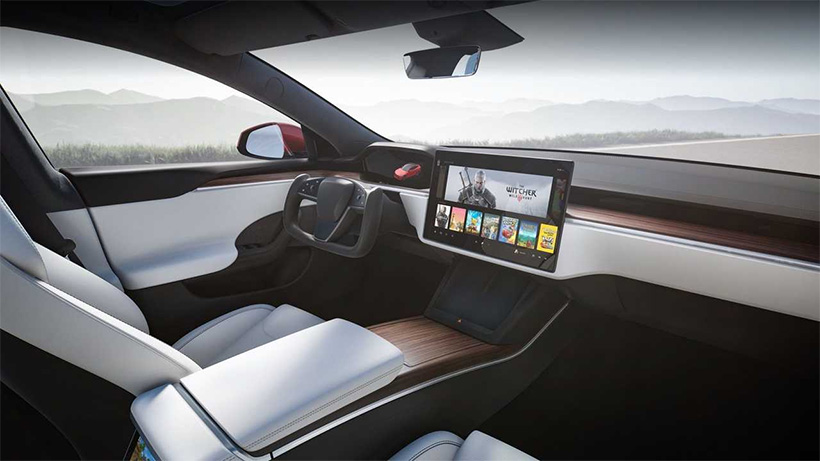In a world where urban transit is rapidly evolving, AI-powered electric vehicles (EVs) and autonomous technology are at the forefront of this transformation. Imagine a city where traffic congestion is a thing of the past, and transportation is seamless, efficient, and environmentally friendly. This isn’t a distant future—it’s happening now. According to Bloomberg Green, the global market for autonomous vehicles is projected to reach $556 billion by 2026, signaling a seismic shift in how we move. This article will explore how AI and autonomous tech are revolutionizing urban mobility, offering insights into their impact on city life, and providing practical tips for embracing this new era of transportation.
The Rise of AI in Electric Vehicles
AI’s Role in Enhancing EV Performance
AI technology is revolutionizing electric vehicles, making them smarter and more efficient. Companies like Tesla and Rivian are at the forefront, using AI to optimize battery management, enhance driving range, and improve safety features. For instance, Tesla’s AI-driven Autopilot system uses machine learning to navigate roads, reduce driver fatigue, and improve safety.
- Battery Optimization: AI algorithms analyze driving patterns to optimize battery usage, extending the vehicle’s range and lifespan.
- Predictive Maintenance: AI can predict potential issues before they become serious, reducing downtime and maintenance costs.
- Enhanced Safety: AI systems can process vast amounts of data in real-time, enabling features like automatic braking and lane-keeping assistance.
The Impact of AI on Urban Mobility
AI-powered EVs contribute to a more sustainable urban transportation ecosystem. They reduce emissions by optimizing routes and improving fuel efficiency, a critical factor as cities aim to become carbon-neutral. According to the International Energy Agency, widespread adoption of AI in EVs could reduce urban transport emissions by 30% by 2030.
Autonomous Vehicles: A Game Changer for Cities
How Autonomous Tech is Transforming Urban Transit
Autonomous vehicles (AVs) are set to redefine urban landscapes. By eliminating human error, which accounts for 94% of traffic accidents according to the National Highway Traffic Safety Administration, AVs promise safer roads. Companies like Waymo and Uber are leading the charge in deploying autonomous fleets for urban transit.
- Traffic Decongestion: AVs can communicate with each other to optimize traffic flow, reducing congestion and travel time.
- Increased Accessibility: AVs offer greater mobility options for individuals who cannot drive, such as the elderly and disabled.
- Cost Efficiency: Shared autonomous fleets reduce the need for personal vehicle ownership, lowering transportation costs for users.
Challenges and Considerations
While the benefits are substantial, challenges remain. Regulatory hurdles, cybersecurity threats, and public trust are significant barriers. However, as technology advances and governments create supportive frameworks, these challenges are being addressed. For example, several cities are already piloting AV programs to test and refine these technologies.
Embracing the Future of Urban Mobility
Practical Tips for Consumers
As AI and autonomous tech reshape urban transit, consumers can take steps to embrace these changes:
- Stay Informed: Follow updates from industry leaders like Tesla, Hyundai, and Ford EV to understand new features and innovations.
- Evaluate Charging Infrastructure: Consider the availability of EV charging stations in your area. Companies like ChargePoint and Electrify America are expanding their networks.
- Explore Ride-Sharing: Services like Uber’s autonomous rideshare programs offer a glimpse into the future of transportation.
Comparing EV Models
When considering an EV purchase, compare models based on:
- Battery Range: Tesla’s Model S offers up to 405 miles, while the Hyundai Ioniq 5 provides around 300 miles.
- Autonomous Features: Look for models with advanced driver-assistance systems (ADAS) for enhanced safety.
- Price and Incentives: Research available tax credits and rebates to reduce upfront costs.
Conclusion: Driving Towards a Smarter Future
In conclusion, AI-powered EVs and autonomous technology are not just futuristic concepts—they are tangible solutions redefining urban transit. By embracing these innovations, cities can become cleaner, safer, and more efficient. As consumers, staying informed and open to new mobility options will prepare us for this transformative era. What excites you most about the future of urban mobility? As we drive towards a smarter future, these technologies will continue to evolve, offering endless possibilities for reshaping how we live and move in urban environments.
With AI and autonomous tech, the future of urban mobility is not just on the horizon—it’s already here. Join the conversation and explore how you can be part of this exciting journey towards smarter, more sustainable cities.

